Tag: Become a Home Inspector
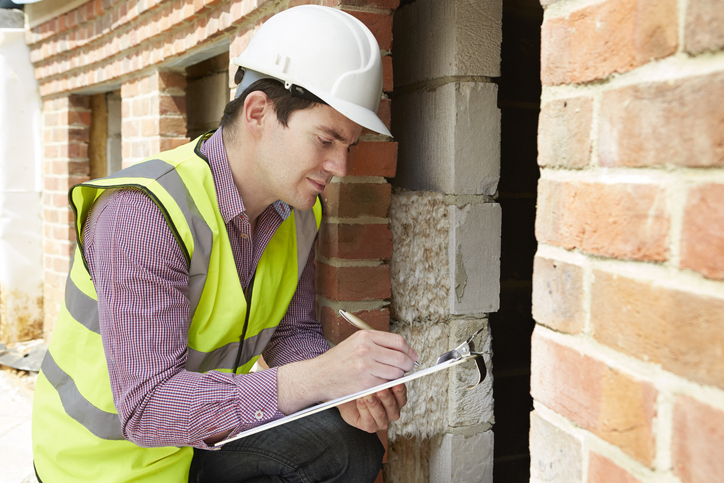
Home inspectors play a crucial role in the home-buying process by providing information to prospective home buyers about the conditions of the properties that they are interested in purchasing. These professionals carefully analyze every aspect of a property, including the electrical system, plumbing, roofing structure, heating, heating pumps, and the overall exterior and interior. A home inspector may also suggest solutions to problems they may see so that future homeowners can anticipate other costs associated with the house.
One of the great things about becoming a home inspector is that you can work independently and start your own business. However, starting a home inspector business can be challenging, so a clear plan needs to be devised and executed for the business to succeed. Are you considering starting your own business after home inspector training? Read on for some essential tips to consider.
Develop a Plan for Your Future Home Inspection Business
Every new business should have a plan set up to help guide the journey. A clear outline and goals will help drive your business idea forward after home inspector training. Your training will provide the knowledge and expertise you’ll need to thrive when starting your own business since you will have the skills to carry out jobs successfully.
A business plan will be useful for approaching banks and investors, walking them through your services, financial projections, marketing plans, and your overall strategy for achieving success. A good business plan must include the following components:
- An executive summary
- A description of your business
- Strategy and market analysis
- A good marketing and sales plan
- Your business management plan
- Descriptions of your services
- A thorough analysis of your competition
- Details on how you plan to operate your business
- Your financial needs and projections
- Documents and other items investors might want to see (permits, financial documents, marketing materials, etc.)

Effective Marketing That Sets Your Home Inspection Business Apart
Marketing is an effective way to promote your home inspection business so that home buyers are more likely to find your business instead of a competitor. Utilizing social media and a well-designed website will allow you to stand out from the competition.
Posting regularly and staying active on social media can help you build brand recognition as well as your following. Some ideas for social media posts include providing home buying and inspection tips to prospective clients and sharing customer reviews and testimonials. You can also share general content about your business and yourself, including any achievements from your home inspector courses. Some social media platforms you can make use of include Facebook, Instagram, and TikTok.

It’s also important to have a professional website for your business, where potential clients can find your contact information online, as well as other important details about your business, including prices, services, and more. Additionally, once you have a website, you can delve deeper into your marketing by creating a blog page with helpful information for clients, and you can optimize your site for SEO so that your business will be easier to find on search engines.
Contact Real Estate Agents After Home Inspector Training
Connecting with real estate agents can be mutually beneficial. Since real estate agents have access to multiple listings and clients interested in buying homes, they are in an ideal position to recommend your business to their clients. On the other hand, a home inspection is a critical part of buying a home, and real estate agents know that clients will need to have one conducted, so knowing a home inspector they trust and can recommend benefits them as well.
Maintain relationships with people you meet in your home inspector courses, as well as your clients and real estate agents you meet or have already worked with. This will help you meet more people in the industry and continue to build meaningful connections, and grow your network.
Do you want to become a home inspector?
Contact NATS to learn how you can get started.

A roof is a solid financial investment, but it’s not one that homeowners typically want to make immediately after purchasing a new home. Unfortunately, some homeowners find themselves having to deal with the fallout of a hasty purchase long after the deed has exchanged hands.
As a home inspector, it’s up to you to help your clients spot structural defects and other problems in any residence they’re looking to purchase. They will be counting on you to ensure that they don’t make a purchase that poses a financial and health risk to them.
A roof can have a variety of problems, especially if it’s getting old. Here are some of the most common ones to be on the lookout for as a home inspector.
1. Your Home Inspector Training Will Help You Spot Minor Leaks
A roof is approaching the tail end of its lifespan when it starts to leak. During the rainy seasons, leaks in a roof are easy enough to spot. On the flip side, you’ll need the insights gained during your home inspector training to spot leaks when it is not raining or snowing.
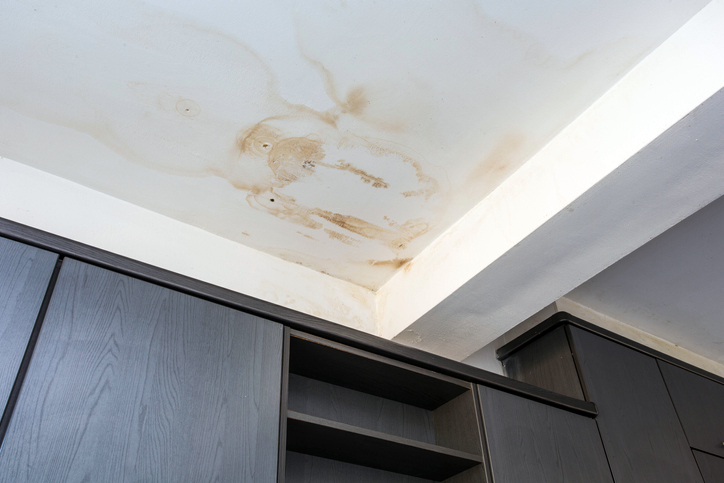
A leaky roof can damage the ambiance of a home, as well as the properties in the home. Even worse, a leak constitutes a health hazard to all the occupants of that home. And since the roof in question will need replacing, it is a major financial drain. As a home inspector, you’ll need to examine the roof of any property for signs of leakage. Pay particular attention to discolorations on ceilings; these are indications that water has been trapped on that spot. If any part of the roof is sagging, it’s likely to have suffered water damage.
2. Dark Spots on Ceilings and Walls
Dark spots on the ceilings and walls are a big red flag. These discolorations are visible signs of the presence of mould on the roof of the property. Mould is hard on the eyes, but it can do much worse than pose aesthetic problems. It can exacerbate respiratory conditions and ultimately damage the structural integrity of a home.

If you notice dark spots or damp smells in a house that your client is interested in purchasing, take a few extra moments to carry out a careful examination of those spots. Chances are those areas have been afflicted by a serious case of mould contamination. In that case, it would be in the best interest of your client to steer clear.
3. Granules in the Gutters
Granules coming off a newly-installed roof are nothing to worry about. However, if the roof is getting on in age, it should trigger warning bells during your home inspector career.
Granules appearing in the gutter indicate that the roof’s shingles are damaged. Without the granules, the shingles on a roof would deteriorate considerably faster, and the roof would need to be replaced earlier. Loose, curled, or damaged shingles provide the roof with inadequate protection against the elements–so it’s important to fix that problem earlier rather than later.
Are you ready to become a home inspector?
Contact NATS to get started.
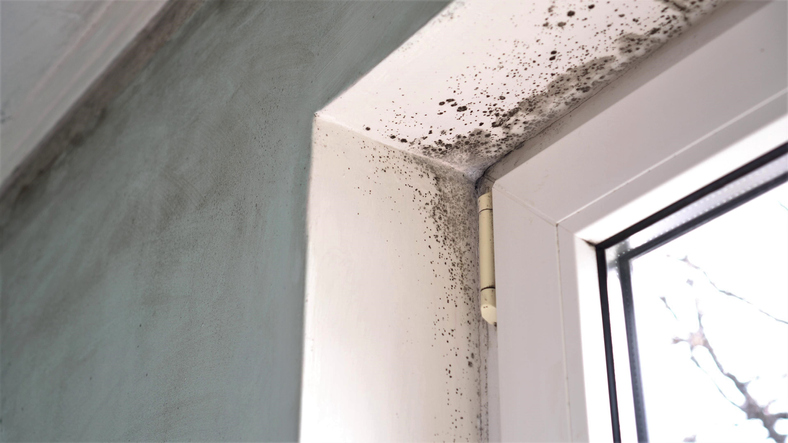
Are you looking forward to a career as a home inspector? If so, you will play a crucial role in the safety of the public. Your primary objective as a home inspector will be to serve as a consultant for home buyers seeking to make an informed decision about the residence they’re considering. Your expertise ensures that they don’t dig themselves into a financial hole, purchasing a home that will require expensive repairs or updates. Most importantly, you’ll make sure that your clients don’t purchase a home that poses a risk to their health and safety.
What kinds of risks should you be on the lookout for? While there is plenty to be aware of, dangerous mould will be a chief concern. What exactly is mould? What signs will alert you to a mould problem in a house? Keep reading for the answers to all of these questions below.
What Is Mould?
Mould is a type of fungi that can easily grow and reproduce in oxygen. It thrives in damp areas. In a natural environment, mould actually serves an important purpose in the ecosystem, aiding the decomposition of dead plants, animals, and other organic materials. That being said, when mould spores attach themselves to a building, they can pose a serious risk to the health of inhabitants.
Mould contamination can exacerbate respiratory conditions like asthma and allergies. Skin conditions, post-nasal drip, and flu symptoms are also not uncommon. There are multiple species of mould, but Penicillium, Cladosporium, and Aspergillus are most commonly found in buildings. Here are three signs to watch out for after home inspector training.
A Rotten or Musty Smell in the Air Could Be a Sign of Mould
Odour is one of the most obvious indications of mould–the smell of a mould-contaminated area is pretty distinct. You might notice a smell that resembles rotting or an odour that can only be described as damp. It’s common for the smell to come from carpets, cling to furniture, and spread from air conditioning and heating equipment, as these are all areas where mould spores can easily thrive and reproduce. Be sure to take a deep breath upon walking into a home you’re inspecting, and pay special attention to mould-friendly surfaces and basements, which are vulnerable to flooding and excessive moisture.

Watch Out for Warped Walls After Home Inspection Training
Warped walls are a visible clue you can easily spot after home inspector courses. You may see discoloration on walls and ceilings, bubbling paint, peeling wallpaper, the appearance of dark spots, cracks, and the loss of the wall’s original shape. These effects are a sign that mould is growing behind the walls. Over time, mould can weaken a home’s structure, making it more vulnerable to damage. As you can imagine, this will lead to a rather expensive repair process down the line.
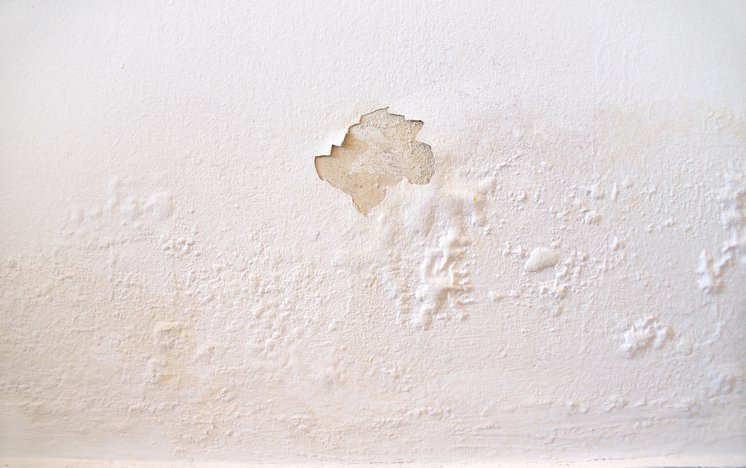
Be Aware of Past Water Damage
As a home inspector, you’ll learn that damage in a house can be sneaky, presenting very few evident signs like the ones discussed above. With mould, it can take years for any symptoms to show themselves. For this reason, it’s important to be as knowledgeable as possible of a house’s history to evaluate whether there is a risk of mould contamination.
Sometimes, information from sellers is limited–intentionally and unintentionally–so watch out for signs of water damage during your inspection, like flooding, discoloured walls, and damp walls. If you’re excited to learn more about home inspections, you’re in the right place. The Home Inspection Program at NATS is designed to address inspection methods for roofing, electrical, HVAC, plumbing, exterior, interior, and insulation in accordance with the Canadian Association of Home & Property Inspectors (CAHPI) standards.
Ready to become a home inspector?
Contact NATS for more information!
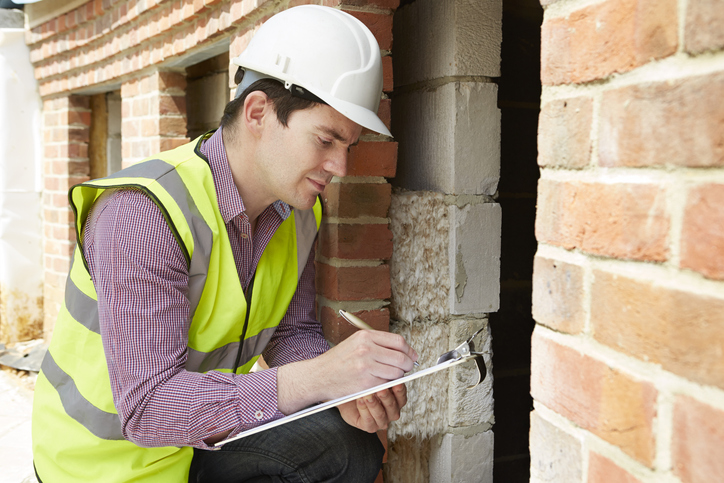
Homes are designed to last long and stand up to the elements, but even the most quality-built homes begin to falter as they age. Over time, these imperfections can seriously affect a house’s functionality and safety. If you’re considering a career as a home inspector, you will be responsible for finding these signs of aging for your clients during home inspections.
Throughout your training, you’ll learn all about the systems and components of a house, including roofing, structure, exterior, interior, insulation, and more. Upon completion, you’ll have a deep understanding of what you should look out for when you’re on the job–one of these things being signs indicating old age. Read on to learn 3 things you should watch for during home inspections that could signify old age.
1. Check For Water Stains When You Become a Home Inspector
As homes age, their roofs continually take the worst of the elements from outside. Over time, the roof may wear, and shingles may fall off, making way for leaks, which can cause significant damage to a home if they remain unchecked for too long.
Once you become a home inspector, it will be essential to inspect the roof for damaged or missing shingles. Aging shingles are more likely to have cracks that can allow water to pass through, while damaged shingles will begin to peel and curl as they wear down. These warning signs will let you know the roof needs to be repaired and provide insight into where water might have entered the home.

When water damage is combined with a lack of good ventilation in the home, the atmosphere can allow mould to grow – which can be dangerous to the health of the occupants. A quick way to identify whether a house might have mould is by its musty smell. If you think there may be mould, look for evidence within the house’s interior, especially in bathrooms, laundry rooms and other areas that tend to be humid. Signs to look out for are water stains or discoloured spots and stains on the walls and the ceiling, as well as sagging in the ceiling.
2. Check All of the Windows
Much like the roof of a home, windows take a lot o the brunt from outside conditions, as well. Over time, a poorly flashed or failing window will begin to leak. When you become a home inspector, it’s vital to begin your inspection with the home’s exterior. This way, you’ll be able to spot an old window. It will be thicker on the bottom than a modern window. It may still be in its original frame, displaying its age.
When wooden window frames are exposed to water, they begin to show signs of decay. If the wear is bad enough, the house water stains may appear close to the window. As an inspector, you’ll know this can indicate that:
- The window needs to be replaced.
- You should check the foundation for water damage. If there are water stains in the house, there is a good chance there is water damage elsewhere.
When you check the home’s interior, ensure no mould or dry rot surrounds the windows. Replacing an old window is quite the task, so your clients will appreciate knowing it may be a considerable task.
3. Look for Visible Cracks in the Foundation
In contrast to modern homes, older homes were mostly built using primitive concrete, which is more prone to breakage than the one that’s used today. As a result, when older homes move and settle, cracks can often form in their foundation, leading to issues further down the road.
Another issue to watch for after your home inspector training is the perimeter and underfloor drainage. In older homes, water can sometimes get stuck, often causing mould and decay to the foundation.
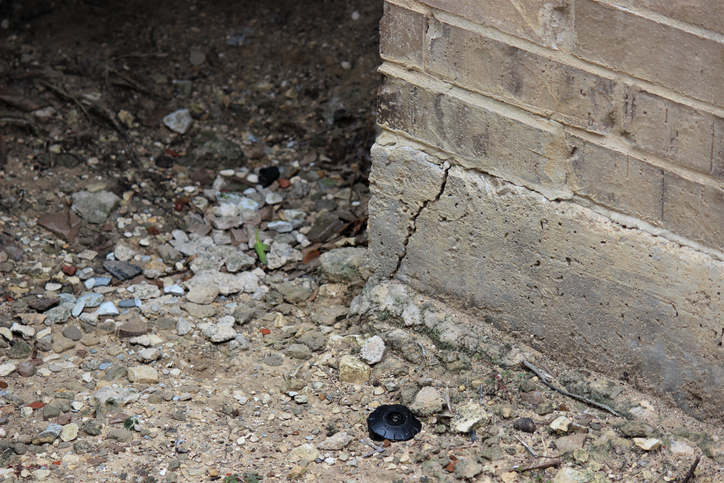
You will be able to spot a failing foundation with a few warning signs. During your inspection of a home’s exterior, you may notice visible cracks on the outside of the house, and inside, you may see slanted or bouncy floors.
Your training will teach you the ins and outs of home inspections, preparing you to enter this in-demand career.
Are you ready to start your home inspector career?
Contact NATS for more information.
Considering a Home Inspection Career? Signs of Poor Home Workmanship
September 15, 2022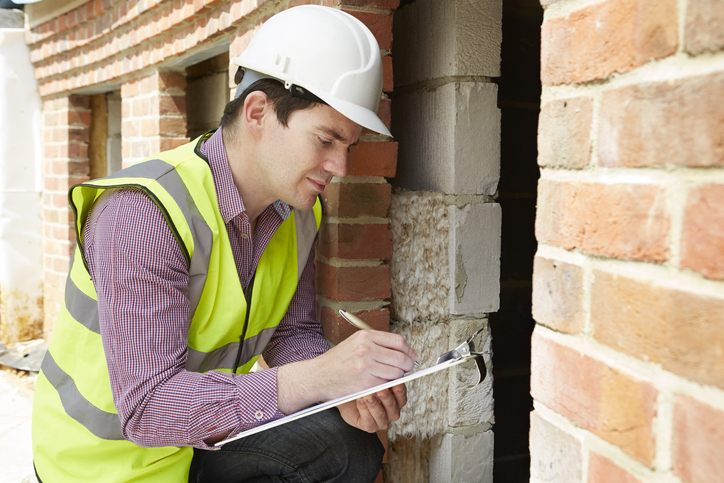
The condition of a person’s home has the potential to greatly affect their quality of life, for better or worse. If you’re passionate about helping others, have a keen eye for detail, and are interested in the construction industry, a career in home improvement could be perfect for you. You can play an essential role in a client’s home buying process, highlighting issues that could guide price negotiations in addition to giving your clients an estimate for the repairs they’ll have to do once they move in.
In many cases, home inspectors use their expertise to detect problems that could cause major safety concerns when left unfixed. If you’re considering this career path, you may be wondering what signs you should be looking out for. Here are some signs of poor home workmanship to take note of outside, inside, and in the foundation of your clients’ homes.
Signs of Poor Workmanship on the Outside of a Home
When you begin your home inspection on the outside of a client’s home, the windows, doors, patios, decks, and concrete surfacing should be your main focus. Look at the way windows are sealed; if you notice condensation between the glass on thermal windows, this is a sign of a failed seal. This can result in higher energy bills for your clients, mould and mildew growth which can affect air quality over time, and draftiness. Doors with seal failure might create the same energy efficiency problem as windows.
Watch out for cracks in the walking surface of patios and where they intersect with the wall of the house. Throughout your home inspector career, watch for concrete cracks as well, as this can be an indication of soil that was not properly prepared before the concrete was installed.
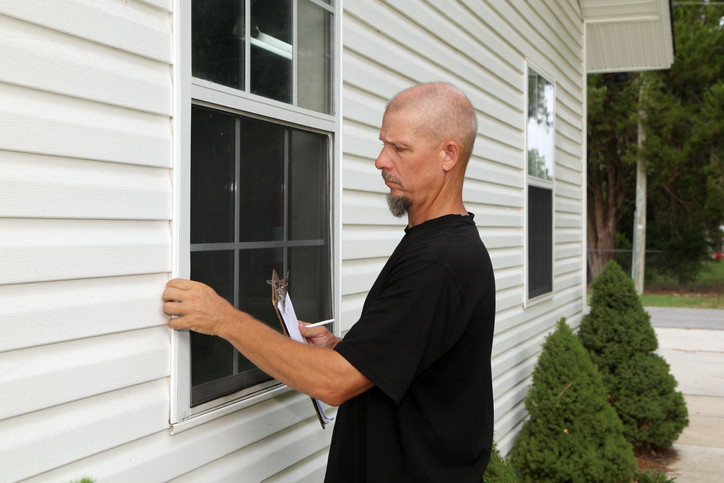
Signs of Poor Workmanship to Look for Inside a House
Inside your clients’ homes, look for cracks in the drywall, as this can indicate soil movement or structural issues. Watch for uneven floorboards, tile cracks, water marks under the carpet or linoleum, and discoloration–these can all indicate water infiltration that occurs as a result of cracks in the foundation. Pay attention to the temperature inside the house. If there’s a problem controlling the temperature inside, faulty HVAC systems are likely to blame. Observe how the switches and electrical outlets work as well.

Signs of a Bad Foundation to Watch for During Your Home Inspection Career
As you’ll learn in home inspection training, many of the most common and detrimental problems in a house are difficult to observe right away. For example, construction flaws in a house’s foundation can be difficult to spot at first. Check for sagging floors, peeling wallpaper, damp crawl spaces, protruding nails, doors that won’t close properly, and cabinets and countertops that separate from the walls. Here at the North American Trade Schools, we teach students about every component and system within a house, including roofing, structure, electrical, heating, air conditioning/heat pumps, plumbing, exterior, insulation, and interior so that their clients can rely on their consulting services.
Ready to become a home inspector?
Contact NATS for more information!
Want to Become a Home Inspector? 3 Ways to Prepare for a Job Interview
April 12, 2022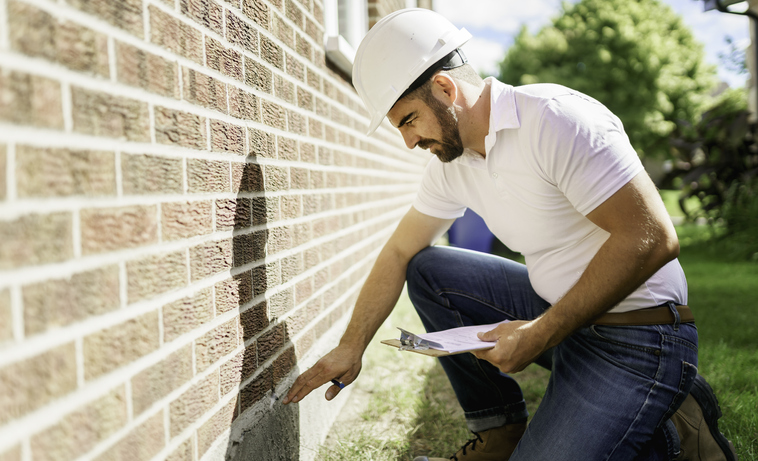
It’s normal to feel a bit nervous before an interview—especially if it’s for a job you really want. Preparing for any job interview can be stressful, but with the proper guidance and preparation, you can ace your interview with flying colours. In fact, we’ve collected a few helpful tips that you can use as you prepare to begin your new career.
Read on to learn how you can prepare for an upcoming home inspector interview!
1. Demonstrate Your Attention to Detail After Your Home Inspector Training
During a home inspector job interview, it’s a good idea to showcase your ability to pay attention to details. Paying attention to details is a pretty important aspect of working as a home inspector, since it’ll be up to you to spot any issues or red flags about the property. After you’ve completed your pre-apprenticeship home inspector training and have started interviewing for different jobs, you might be asked questions that have to do with this skill. If you can share examples of times when you paid careful attention to detail, then it’ll help you demonstrate why you would be a great fit for the position.
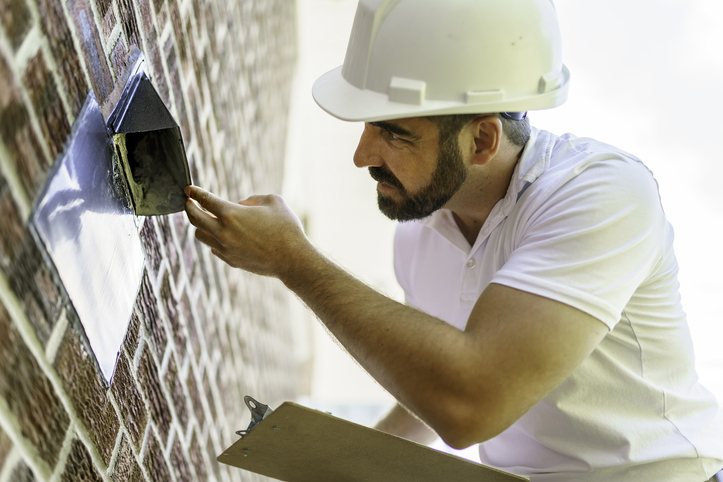
2. Showcase Your Communication Skills
Brushing up on your communication skills is also a good idea before any interview. Fortunately, your training will help you develop and improve your communication skills. Why? Turns out, having good communication skills is important for your home inspector career. Whether writing out reports or communicating with clients, your communication skills will serve you well throughout your career.
To help you prepare for your interview, you can do practice sessions with a friend or family member. You can practice your answers to common interview questions, as well as get comfortable talking about your education and work experience. By taking the time to practice a bit before your interview, you’ll improve your confidence. This can in turn help you feel more comfortable and less nervous during the interview, as well as improve your chances of leaving a good impression.

3. Take the Time to Research the Company
When preparing for an interview, it’s always a good idea to do a bit of research and preparation beforehand. In addition to the time you spend brushing up on your communication skills, you’ll also want to spend some time looking over the company website. You can make note of things like the work culture, the type of work involved, the team, and other important pieces of information. It’s also a good idea to look over the job description again. This will help you get a good idea of what you can expect if you were to take the job. It can also help you determine if there are any questions that you would like to ask the interviewer. The interviewer might also be impressed that you took the time to do your research, which can help you stand out against the competition.
Want to become a home inspector?
Contact NATS for more information about our training programs!
Identifying Spring Weather-Related Damage During Your Home Inspector Career
March 15, 2022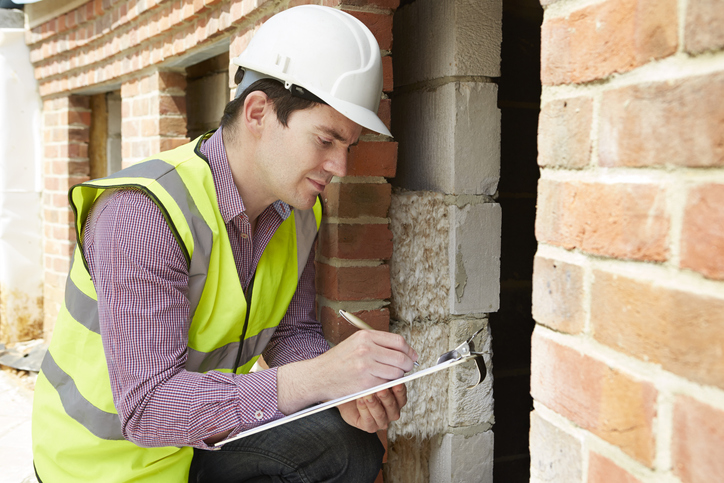
Spring weather is right around the corner, and with it comes certain types of weather known for causing certain types of damage. As an aspiring home inspector, you’ll help home buyers make informed decisions about their new homes. Your keen eye, in-depth training, and investigative skills will help you spot all kinds of potential issues, including damage that can spring up when the winter thaws. Spring weather brings with it storms, lightning, and hail. Temperatures might be milder, but the damage spring weather can bring may wreak havoc on a house.
Read on to discover what damages to look for during the spring!
Spot Spring-Related Roof Damage After Your Home Inspector Training
When you go with your clients to inspect a new home, especially during the spring, it’s always important to thoroughly inspect the roof for potential issues. Spring weather can mean heavy storms, and the roof usually takes the full brunt of any damage caused by these weather events. If you notice any leaks or roof shingles missing during home inspections after you complete your home inspector training, then that’s an unfortunate indicator that spring storms have caused some damage. You’ll also have to inspect the home’s attic to check for any signs of dark water stains forming, as well as for any sunlight coming in through the roof.
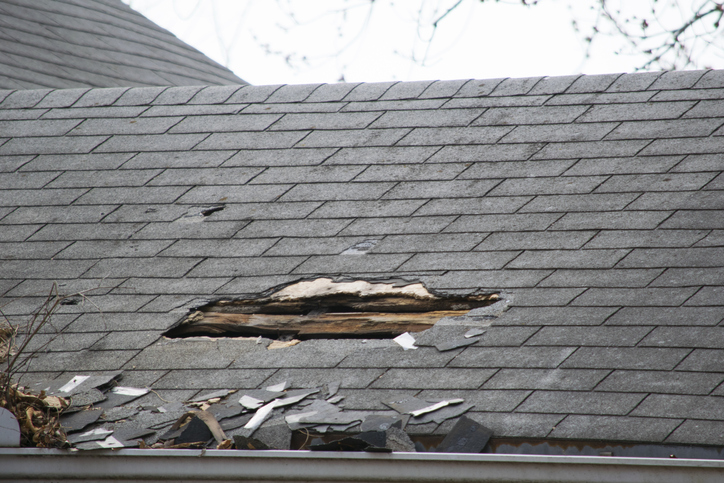
Make Sure to Inspect a Home’s Siding
When you become a home inspector, you’ll get to carefully inspect the exterior of many different homes. A home’s siding is there to prevent the exterior walls from the elements making their way to the interior side of the house. The siding keeps your client’s home insulated during the winter and summer. It also protects your client’s home from moisture and mold buildup that can rot the foundation of the house and cause structural damage in the process. A siding inspection is therefore necessary, to ensure that no damage was sustained during the spring thaw. Storms and heavy rain can sometimes cause cracking, denting, or splits in the siding. As a result, you’ll want to see if there are missing, damaged, or loose pieces.
Clogged Gutters Are an Important Issue to Catch
In the event of a heavy spring storm, a house’s gutters have an important role to play. They help make sure that water drains properly and doesn’t damage the rest of the house. Gutters are an essential part of maintaining and protecting the exterior of a home and preventing rainwater from making its way into the interior. As a result, you’ll want to check gutters to make sure that they aren’t damaged or clogged. If they are, it’ll be important for you to check for signs of water damage and other issues that might be affecting the property.
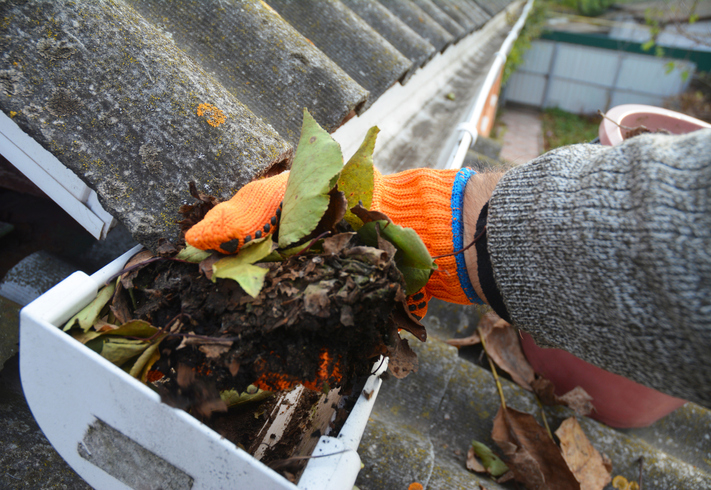
When gutters are clogged, the property becomes susceptible to erosion, leaks, and other water-related damages during the spring season. If you notice any areas where the gutters are broken or sagging, causing water to build up, then advise your clients that immediate repairs need to be done.
Are you interested in a home inspector career?
Contact NATS for more information about our training programs!
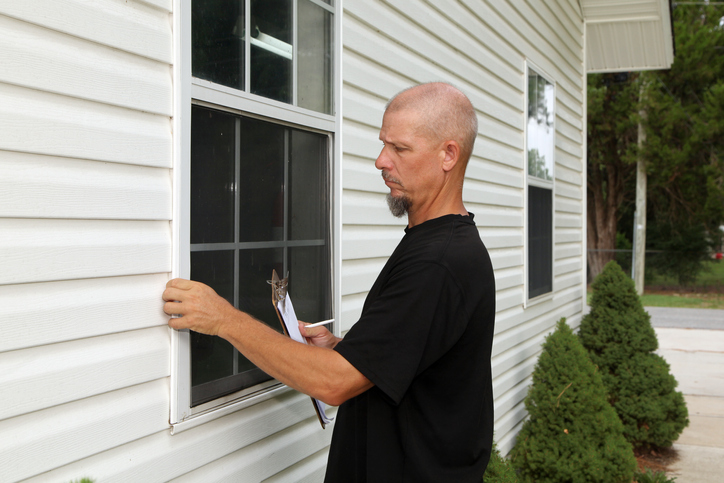
Becoming a home inspector is a rewarding career that comes with many benefits. You’ll get to use your observation and critical thinking skills as you inspect different homes for problems. You’ll get to travel to different locations to do your inspections. And you’ll also have the satisfaction of seeing new homeowners make the right decision on their dream homes.
Some homes, whether new or old, may have some red flags that’ll have to be assessed properly before purchase. It’ll be up to you to help homeowners make informed decisions on what issues they can live with, what counts as a dealbreaker, and what may require essential repairs right away before moving in day.
At NATS, you’ll receive hands-on training in roofing, electrical, heating, and much more. This will prepare you to inspect homes with confidence.
Read on to discover what red flags to watch out for as a home inspector!
Watch Out for Cracks and Gaps After Your Home Inspector Training
Large cracks and gaps are one important red flag you should always look out for. They can appear around a home’s garage, deck, and patio—as well as in driveways, sidewalks, and several other spots.
Spotting these issues during an inspection can help uncover bigger problems affecting the property. For example, gaps between doors, pipes, or windows usually indicate a water intrusion. And when cracks are visible in concrete, that may indicate that there is an improper installation issue or soil problem. After your home inspector training, you might often find yourself on the lookout for these kinds of issues!
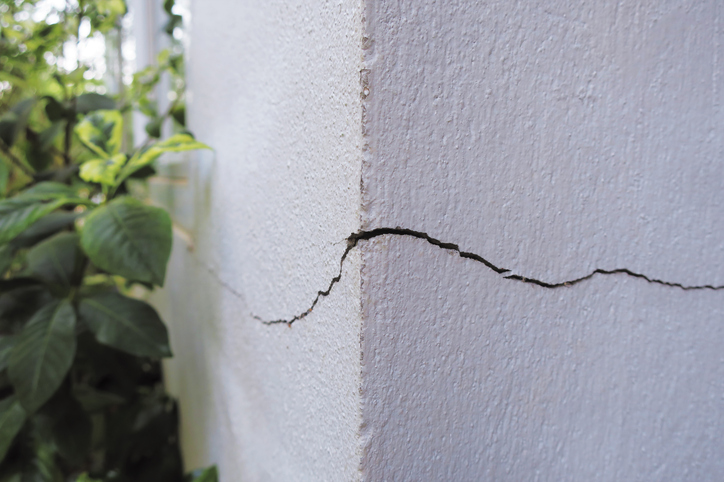
Watch Out for Drainage Issues
Another major red flag to look out for when you become a home inspector is water drainage issues. During inspections, you’ll want to check that water drains away from the house rather than towards it. To do that, you’ll have to inspect all the gutters of the house to ensure that they’re set up correctly. Shoddy gutters with missing downspouts, for example, could indicate that the soil around the foundation might not be in the greatest shape, as water could have washed some of it away. Even if no deeper issues are present and the buyer does opt for the house, they’ll need to know that this is a problem that needs to be fixed sooner rather than later.
Unwanted Humidity Inside the House Could Be a Sign of Trouble
Moisture buildup inside of a house is another pretty important red flag to watch out for. Why? Because over time, moisture can cause rotting, mildew, and mold. Improperly insulated windows are one common culprit behind this issue. If during a home inspection you see water droplets building up on the inside of a window, that’s a telltale sign that there are issues with the window and maybe even other deeper problems going on. Of course, there are many other ways for humidity to accumulate in unwanted places, so this is one thing you’ll want to be on the lookout for when inspecting many different parts of a house.
Are you interested in a home inspector career?
Contact NATS for more information about our training programs!
3 Signs of Non-Performance to Look for After Launching Your Home Inspector Career
January 25, 2022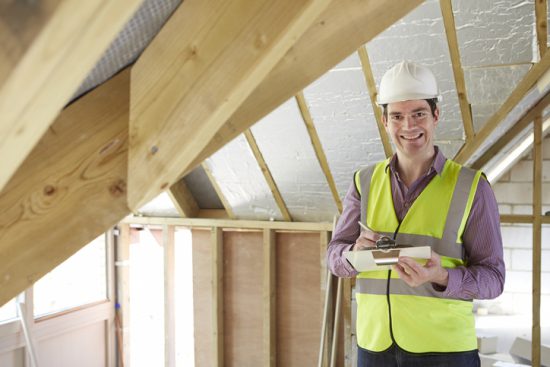
Home inspection comes with a long checklist for evaluating the condition and safety of a home and putting a home buyer’s mind at ease before they make their big purchase. For an aspiring home inspector, performing an evaluation of a property’s plumbing, electrical, mechanical and structural competency is of vital importance and can determine whether a property passes the inspection or not.
At the North American Trade Schools (NATS), we provide an aspiring home inspector with hands-on training in the materials used in the construction of each house system and what to look for during a home inspection. Read on to discover the three signs of non-performance to look out for when you start your career!
1. Inspect Electrical Problems After Your Home Inspector Training
Electrical problems sometimes go unnoticed by a home buyer, and it is up to a home inspector to assess the electrical system of the house. A house with working electricity does not mean that all electrical components are up to standard. As a home inspector, you’ll have to look at electrical issues that are considered fire hazards, which include worn out electrical wiring, overloaded electrical circuits and exposed wiring. After your home inspector training at NATS, you’ll be prepared to inspect and determine the safety of electrical systems and check for faulty or missing GFCI electrical outlets, which need to be placed in all garages, laundry rooms, washrooms and any area that may get damp around the house.
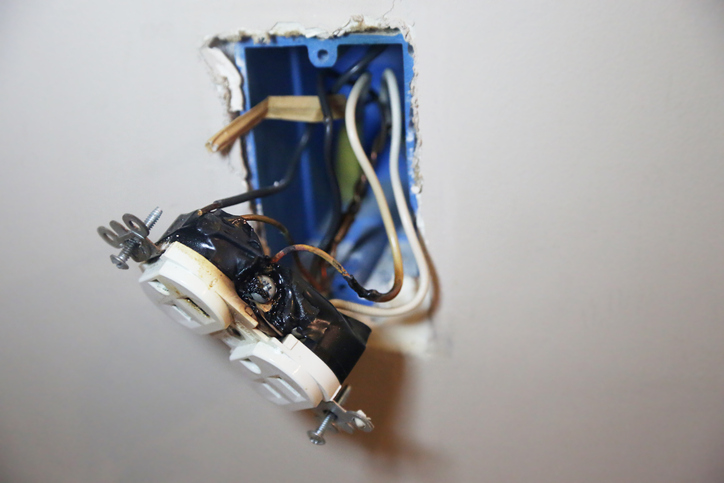
2. Roofing Problems Are a Major Concern
Roofs can usually last 15 to 50 years before they start to deteriorate–depending on the material used, the weather conditions and ventilation. Therefore, a thorough roof inspection is of major importance when you become a home inspector. It will help prevent any serious issues from occurring, like pest infestation or water leaks through ceilings, and can save a homeowner time and money on major repairs down the line. You’ll be prepared to inspect roofs after completing our Home Inspection Program and identify when a roof needs repairs or replacement. Some of the signs to look out for during your inspection include cracks and rust on flashing, moisture in the attic or ceiling, loose or missing shingles and unevenness or soft areas.
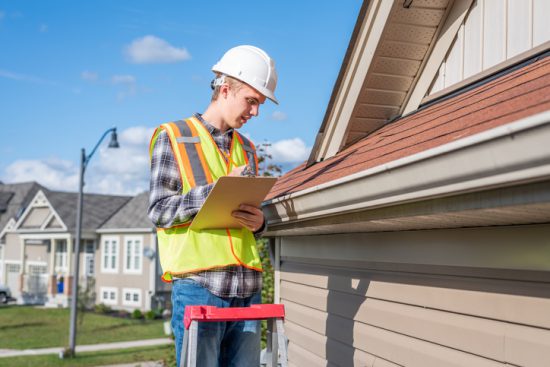
3. Water Leaks Due to Plumbing Issues
Plumbing issues can be hard to identify and require a professional home inspector to thoroughly investigate the plumbing system around the property. The home inspector will be able to assess any issues or damages caused by the plumbing system installed inside the house by checking for minor leaks and rusted pipes. If you discover leaks of clogging in the pipes, you should investigate whether the plumbing around the house has polybutylene piping, broken or rusted pipes, high water pressure, galvanized pipes or sediment build-up. That way, you can make an informed recommendation on whether to repair or replace a home’s plumbing system.
Interested in starting a home inspector career?
Contact NATS for more information!
Signs of Retaining Wall Damage to Look Out for After Home Inspector Training
December 28, 2021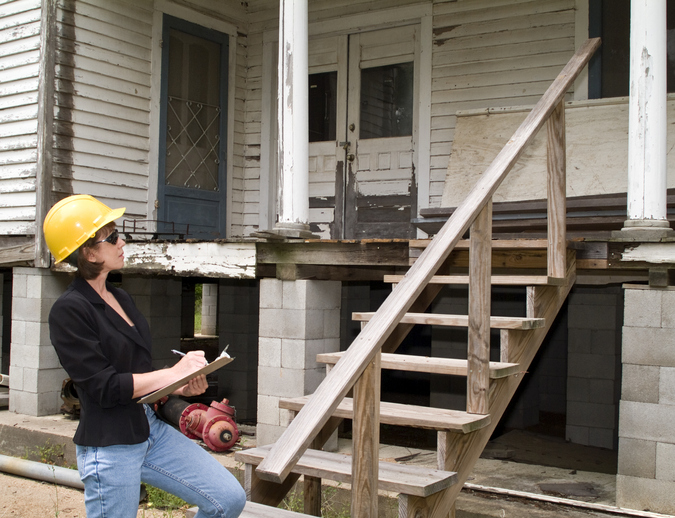
As a home inspector, you’ll be able to identify any issues facing a house buyer as you help them to make informed decisions about their prospective home. One issue home buyers usually face is the issue of retaining walls, and as a home inspector, it will be up to you to look out for the signs of retaining wall damage. Retaining walls are designed to support soil from drifting downwards–which if ignored, will create extensive damage in landscaping and lead to costly repairs.
At North American Trade Schools (NATS), we provide you with training in the skilled field of home inspection. Our training programs equip students with the most current theoretical and practical training required to become successful in the field. Read on to discover what signs to look out for in retaining wall damage when you become a home inspector.
Watch Out for Bowing or Cracking
As a home inspector, you’ll be able to identify common retaining wall damages when inspecting a property. Some of these signs may include cracking, bowing, leaning, bulging, and buckling. Identifying these problems requires the proper hands-on training, which NATS can provide through our home inspector training program, in which you’ll learn under experienced instructors and inside real world labs that simulate a working environment.
Our training program will prepare you to identify these signs of retaining wall damage and provide you with the expertise to advise home buyers on when it’s time to retrofit the wall with anchor bolts to prevent the wall from collapsing.
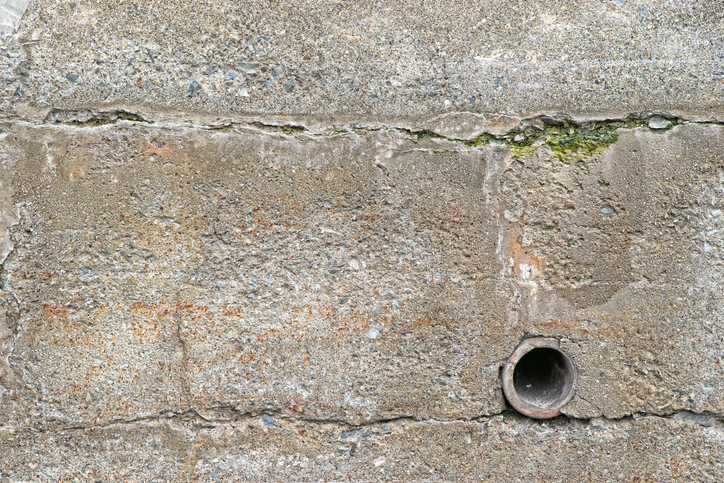
Become a Home Inspector and Identify Poor Drainage That Saves Home Buyers Money
One of the main signs of retaining wall damage is poor drainage. Weep holes are small holes that facilitate the flow of water after rain, and if these holes are clogged due to draining aggregate or improperly graded soil, they result in poor drainage. The hydrostatic pressure that builds up behind the retaining wall will end up saturating the soil, and the retaining wall itself will eventually break, as it won’t be able to handle such a heavy load build-up. When you become a home inspector after graduating from a training program, you’ll be able to predict and assess any issues that may arise with the retaining walls.
Poor Quality and Lack of Reinforcement is a Bad Combination for Retaining Walls
When you choose a career as a home inspector, you should always have the home buyer’s best interest at heart. By making careful assessments and recommendations, you can save your client a lot of money in the long run. Sometimes, retaining wall damage can occur due to improper use of materials, a lack of reinforcements, or both.
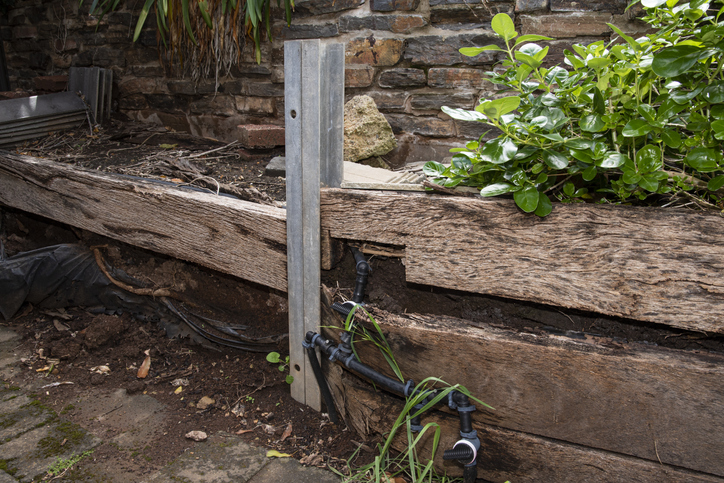
When the retaining wall is built using cheap methods to cut corners, such as the use of a poor concrete mix or improper steel reinforcement, the wall will be unable to handle the expected load it was designed for.
When you attend the home inspection program at NATS, you will become an expert in identifying faults due to old age, deferred maintenance, weather damage, and poor workmanship. At the same time, knowing how to remedy these problems will help to distinguish your skills in the field of construction and home maintenance.
Interested in starting a home inspector career?
Contact NATS for more information!





